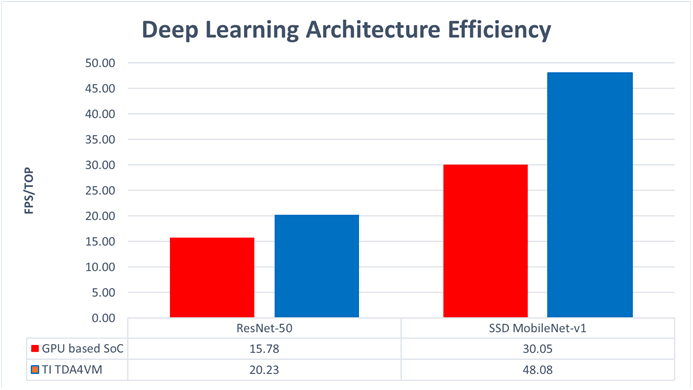SPRACZ2 August 2022 TDA4VM , TDA4VM-Q1
ADVANCE INFORMATION
3.3.1 Benchmarking against GPU-based architectures
Figure 3-1 plots the above TDA4VM results against a GPU based SoC numbers from the MLcommons page [19] for the single-stream mode use case. As we discussed before, FPS/TOPS is a better indicator of energy efficiency.
 Figure 3-1 GPU based SoC vs TDA4VM:
FPS/TOPS comparison
Figure 3-1 GPU based SoC vs TDA4VM:
FPS/TOPS comparisonWe can see from the comparison that TDA4VM is up to 60% better in terms of FPS/TOPS efficiency. What this means is that 60% less TOPS are needed to run equivalent deep learning functions.